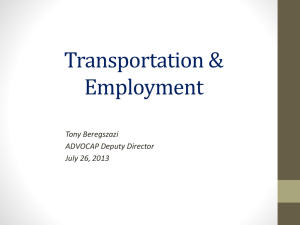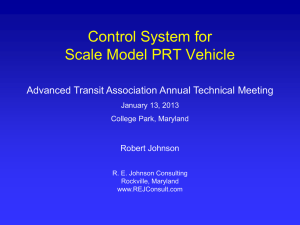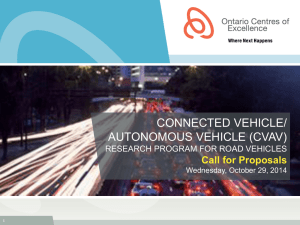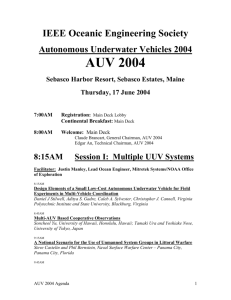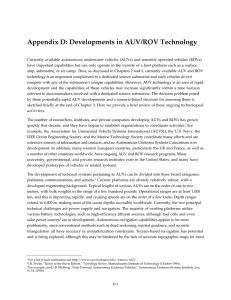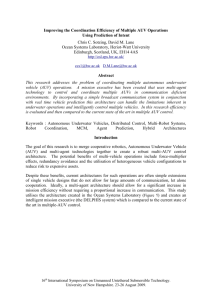Trajectory control and Station Keeping of Under Actuated AUV
advertisement
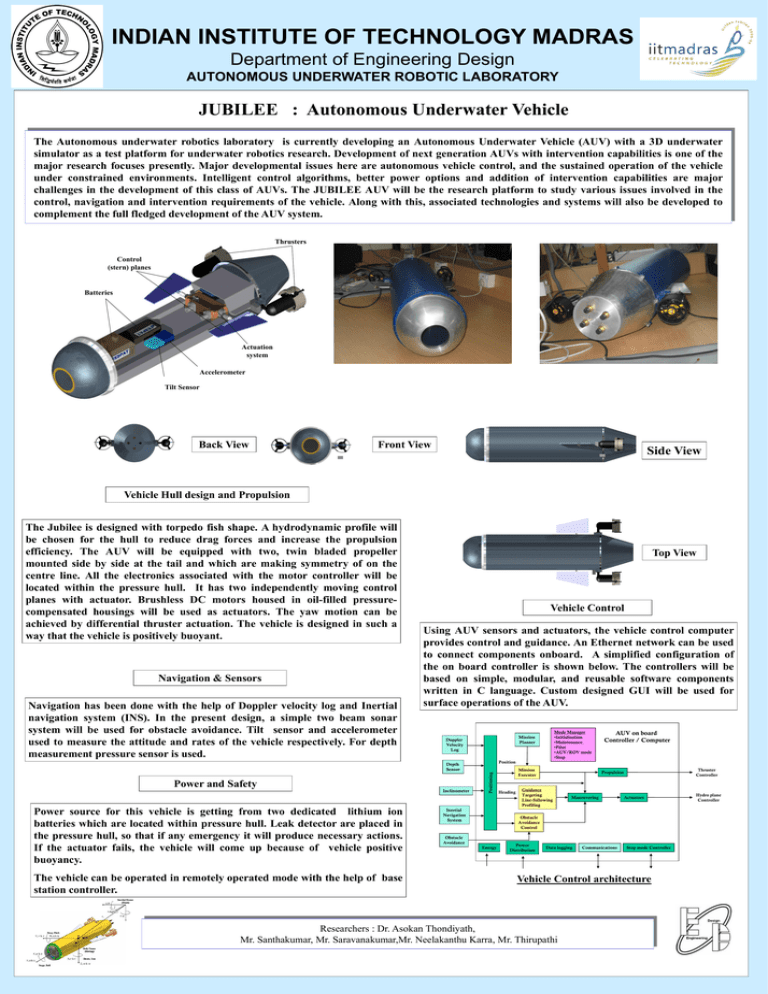
INDIAN INSTITUTE OF TECHNOLOGY MADRAS Department of Engineering Design AUTONOMOUS UNDERWATER ROBOTIC LABORATORY JUBILEE : Autonomous Underwater Vehicle The Autonomous underwater robotics laboratory is currently developing an Autonomous Underwater Vehicle (AUV) with a 3D underwater simulator as a test platform for underwater robotics research. Development of next generation AUVs with intervention capabilities is one of the major research focuses presently. Major developmental issues here are autonomous vehicle control, and the sustained operation of the vehicle under constrained environments. Intelligent control algorithms, better power options and addition of intervention capabilities are major challenges in the development of this class of AUVs. The JUBILEE AUV will be the research platform to study various issues involved in the control, navigation and intervention requirements of the vehicle. Along with this, associated technologies and systems will also be developed to complement the full fledged development of the AUV system. Thrusters Control (stern) planes Batteries Actuation system Accelerometer Tilt Sensor Back View Front View Side View Vehicle Hull design and Propulsion The Jubilee is designed with torpedo fish shape. A hydrodynamic profile will be chosen for the hull to reduce drag forces and increase the propulsion efficiency. The AUV will be equipped with two, twin bladed propeller mounted side by side at the tail and which are making symmetry of on the centre line. All the electronics associated with the motor controller will be located within the pressure hull. It has two independently moving control planes with actuator. Brushless DC motors housed in oil-filled pressurecompensated housings will be used as actuators. The yaw motion can be achieved by differential thruster actuation. The vehicle is designed in such a way that the vehicle is positively buoyant. Navigation & Sensors Navigation has been done with the help of Doppler velocity log and Inertial navigation system (INS). In the present design, a simple two beam sonar system will be used for obstacle avoidance. Tilt sensor and accelerometer used to measure the attitude and rates of the vehicle respectively. For depth measurement pressure sensor is used. Top View Vehicle Control Using AUV sensors and actuators, the vehicle control computer provides control and guidance. An Ethernet network can be used to connect components onboard. A simplified configuration of the on board controller is shown below. The controllers will be based on simple, modular, and reusable software components written in C language. Custom designed GUI will be used for surface operations of the AUV. Doppler Velocity Log Power source for this vehicle is getting from two dedicated lithium ion batteries which are located within pressure hull. Leak detector are placed in the pressure hull, so that if any emergency it will produce necessary actions. If the actuator fails, the vehicle will come up because of vehicle positive buoyancy. The vehicle can be operated in remotely operated mode with the help of base station controller. Positioning Inclinometer AUV on board Controller / Computer Position Depth Sensor Power and Safety Mode Manager •Initialisation •Maintenance •Pilot •AUV/ROV mode •Stop Mission Planner Inertial Navigation System Mission Executer Heading Thruster Controller Propulsion Guidance Targeting Line-following Profiling Maneuvering Actuators Obstacle Avoidance Control Obstacle Avoidance Energy Power Distribution Data logging Communications Stop mode Controller Vehicle Control architecture Researchers : Dr. Asokan Thondiyath, Mr. Santhakumar, Mr. Saravanakumar,Mr. Neelakanthu Karra, Mr. Thirupathi Hydro plane Controller


